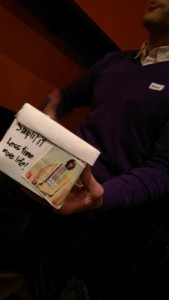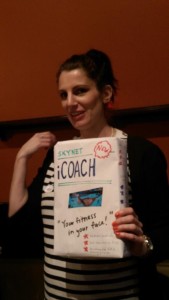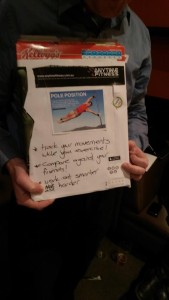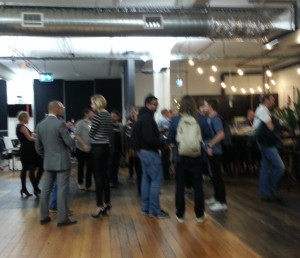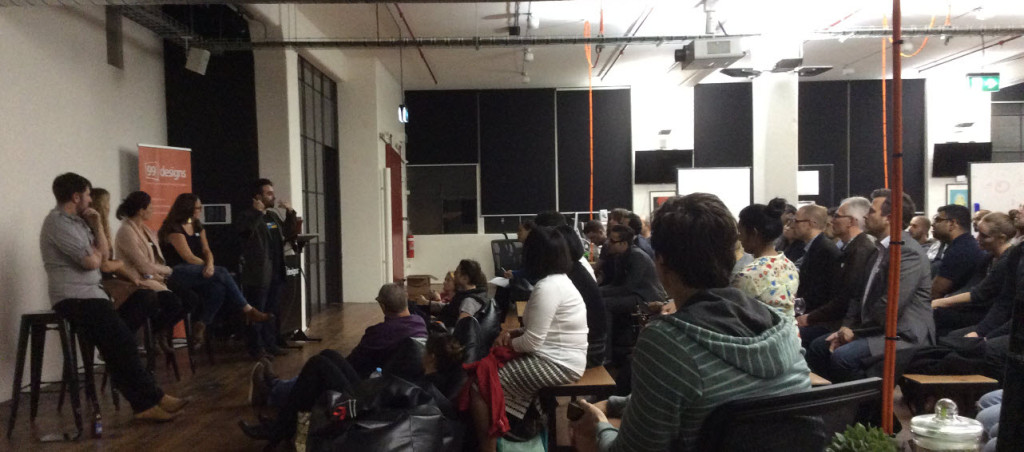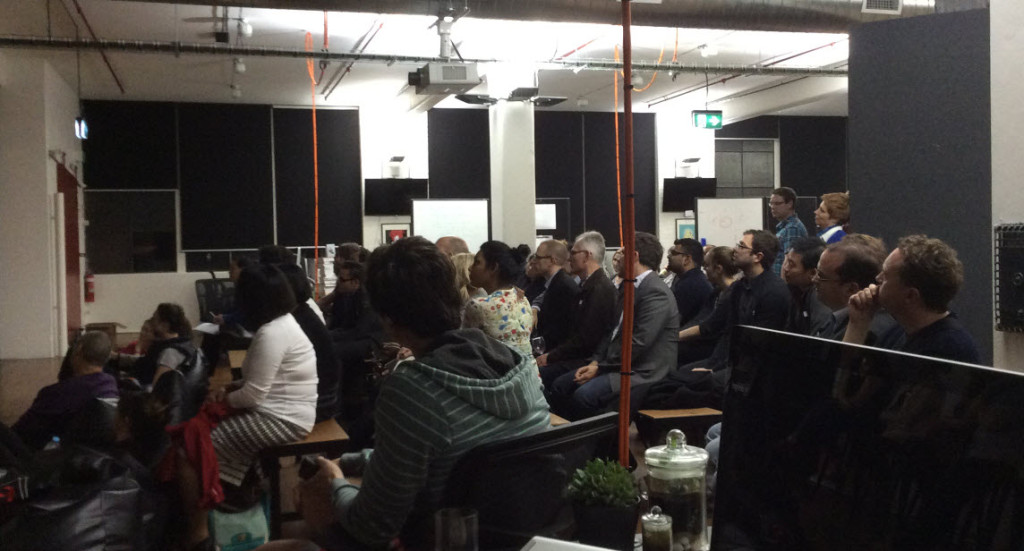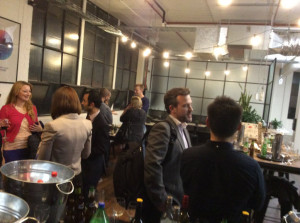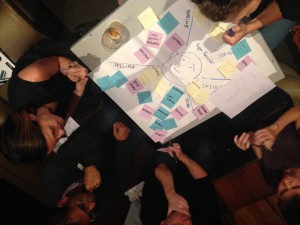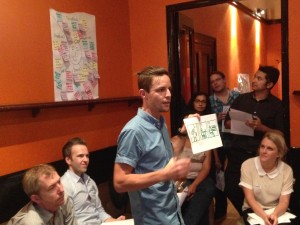Last Friday, Brainmates brought together an impressive line-up to talk about creating great products. The talks were linked through 4 steps of product creation:
- idea selection
- product design
- product team
- launch
The 4 speakers shared their experience in that area for the audience to walk away with a holistic inspiration for building great products.
Warren Wan kicked us off talking about idea selection and opportunity assessment steps at MyFitnessPal. His perspective is from building a start-up, which is often different to working on products at a large corporate, but in a short half-hour he shared a number of insights, including:
Three things are needed for a start-up to succeed:
- something the founder needs or believes in
- something they can build
- something few others think has value in it
MyFitnessPal’s founder, Mike, started out this way – with a need to lose weight in time for a wedding and frustrated by the standard calorie counter books that were handed out at that time. The available products didn’t match or suit the moment when you were actually at the supermarket needing to assess the calories in food and they certainly didn’t help with the calorie count at a restaurant. Mike went on to teach himself programming so he could build the solution himself.
MyFitnessPal are now in the growth phase and they still focus on the core use case – which for MyFitnessPal is the best in class experience and the food database. With a start-up, over-extending your limited resources is not something you can afford to do so this focus is incredibly important.
They choose to work on ideas that increase the user funnel (overall traffic), that assist with app store placement (currently top 3 app in over 65 countries) and funnel optimisation.
Warren had some important points to add regarding funnel optimisation. Registration is thought of as something that needs to be fast but MyFitnessPal they found this is not an area to shortcut. The more information they can get about their user, the more they can do to support the users’ goals and journey. While that will see fewer sign-ups, the value the user feels by continuing through the process, the better job MyFitnessPal can do with calorie guidance and thus a better value relationship is created.
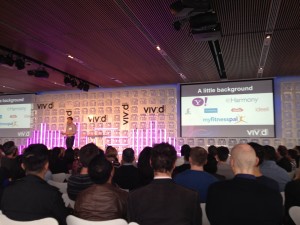
Other important concepts in idea selection are to iterate quickly & listen to the user. It’s important not to overbuild. It’s more important to ship. Every employee listens to support queries so the whole company feels the mission – and understands what the user needs.
Now in the growth phase with the option to hire and go beyond a one-man start-up, there is room to think about hard problems (with big returns). Warren described this as a “widen the moat” strategy – to focus on efforts that drive differentiation between competitors.
The culture at a company needs to support everyone having a voice, and MyFitnessPal concur. Warren explained the “amazon two pizza rule” which is a way to think about team sizes. The analogy is a helpful way to think about how to organise teams – the optimal number of people in a team can be fed with 2 pizzas. MyFitnessPal have sorted their teams around feature groups, to help with purpose and focus and knowing the number of pizzas to order 🙂
Next Lisa Wong took us through the next step in creation of a great product – the design stage. Lisa is director of product and user experience at eBay, Australia. Lisa pulled no punches:
“a product designer and a product manager are not the same thing”
If product managers aren’t designing what are we doing, what are we doing? We are defining the vision. Lisa asks her product team to define the product plan which is made up of just three things:
- What do you want to deliver
- Vision/product approach
- Roadmap
Easy right? Never underestimate/misunderstand the probability of miscommunication. What does this mean? It means the PM’s job is to over-describe and over-explain what is needed. A PM can get sucked into getting feedback, prioritisation and the tactical steps.
If one is so “execution focussed that they are not interested in the reason behind it, then success is a gamble”
Lisa’s guidance for her team to help rise above this is:
- Articulate what you want to achieve
- Establish a frame of reference (common ideas)
For eBay, this was using a store or a warehouse as a metaphor for the digital landscape
- Over-describe and over-explain what you mean
You can never do this too much! There are lots of available tools so use all of them or whichever you need at the time. Use personas, mental models, customer journeys, mood boards, click path analysis, create mental dialoges, etc. Make sure they are are built from observation and data – not from asking.
A theme starts to emerge at this point as Lisa also reiterates comments that Warren has made.
“if you never execute and get out to market you never make money”, so “done better is better than done perfect”.
The focus naturally now shifts to the team and people you need for building great products and this was nicely covered by Henry Ruiz, Chief Product Officer at REA Group.
When looking for people at REA, they look for core skills that include product marketing, conceptual skills, ability to get into the market, ability to predict the market and to be authentic people that influence without authority. This last one is about hiring nice people 🙂
Henry said REA not only looks for high competency but high self-esteem and low ego. Refreshing to hear this articulated about your product management people and hiring process.
The way in which REA frames their work is the 3C’s:
- Context
- The problem statement
- What is it the customer is trying to achieve
- Concept
- Content
- The product idea
- Where a lot of people get stuck and lost in without having defined the previous two.
The power of the product manager is in helping others see the context and the concept before they get lost in their product idea and thus ensuring when they do, it will be to work on the right component that needs solving at that time.
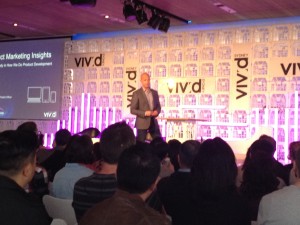
Henry took us on a journey through the “co-creation approach to develop product concepts” at REA. Like most companies, REA have more than one stakeholder to consider – the real estate agent, the seller and the consumer.
In order to ensure they never tug too strongly for one stakeholder and end up hurting another, they ensure a balanced score card is in place for all 3. This helps them build solutions that bring value across that market. Such a disciplined approach leads them to create “sweetspot” concepts repeatedly.
Last, but by no means least, Jane Huxley, currently at Pandora internet radio, led us through launching a product. With experience across many products and industries, from Microsoft, to Vodafone, to Fairfax and now Pandora, Jane shared her experiences with a great deal of humour.
Launch success criteria have changed over time and certainly since Jane’s time at Microsoft. Jane was quite clear that now a launch is “not a date on the calendar” that you can get to and be done. One of those reasons for change is due to the types of products of that time when you would know how well you were doing by the simple(r) maths of the number of products shipping out the door. Now, your parameters for success have changed and Pandora understood that by giving Jane a year to plan for launch.
The support that she had by working with Pandora allowed for options that might not have otherwise been available – Jane called this standing on the shoulders of giants. One needs to make sure it is clear what you do and why you exist – for Pandora that is about being clear that they are targeting the 80% of the market of that are passive listeners of music, they are not after the active listeners that Rdio, iTunes, and MOG etc are after. This is how Pandora stands out from the rest.
The ambiguity that one has to be comfortable with and is necessary to launch and manage products now is something she guides her people on as she recruits them. Jane’s advice is to focus – remember what you said you were going to do in the 1st place. Pull out that napkin or beer mat where you wrote the idea down and as the noise of a launch tries to suck you in, pick up that napkin and remember why you are here. Spend the time beforehand to stave off the biggest risks before pulling the trigger.
Lastly, the viral secret sauce! When someone adds 2 personalised station, they 8 other users within a week. When we discover something new we are compelled to share, so Pandora’s secret is their personalisation + discovery.
And there was one final piece of advice, which I think wasn’t just about launching products – keep calm and play the long game. Jane wrapped up the entire talk with this statement as it rose above all the valuable tactical advice she had provided and essentially reminded us all not to sweat the small stuff.
The summary of advice from Jane to launch successfully:
- Stand on the shoulders of giants
- Stand out from the pack
- Focus
- Go viral
- Keep calm and play the long game
It was a fabulous afternoon of product management goodness from all the speakers with much to learn and a fantastic view of the two great Sydney icons from the Museum of Contemporary Art.
Thank you Brainmates for organising a fantastic event! If you want to check out more from the day, see the Storify.


